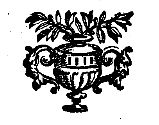


These pages are devoted to the difficult question of vocal intonation as it may have been practiced at the end of the middle ages and during the Renaissance, and as it can be practiced by contemporary vocal ensembles specializing in the music of this period. They serve to introduce Zarlino, a program which creates and plays sound files using an untempered intonation, a historical and theoretical essay on this subject, as well as a Little Syntonic Concert realized with the aid of the Zarlino program.
En français (version initiale; original version)
This tool, as well as its source code, is distributed by its creators as freeware. Zarlino runs on all PCs using Windows 95 (or later) operating systems and a MIDI compatible sound card. It works as a simple sequencer which possesses the following characteristics:
This essay attempts to deal with both the theory and the history of the very controversial question of "Just Intonation." Contemporary models of "Just Intonation" often lead to an impasse. The essay reexamines the tenets of Gioseffo Zarlino (1517-1590), a great Renaissance theoretician whom generations of acoustic specialists have continued to misinterpret since the nineteenth century. On the basis of this reexamination it is postulated that every good singer (or group of singers) is led to create a diatonic grid, a kind of explicit or implicit framework which can be relied upon to keep oneself "in tune," in other words to adjust one's intonation. Recourse to such a framework enables the objections to untempered intonation in vocal music to be challenged. It also leads to a model which, on its own, results in satisfying sound when applied to Renaissance music.
Here one can hear medium length pieces produced according to the syntonic intonation model which is developed in the essay. They are made first and foremost for the ear. Those who can listen with an open mind may end up being really astonished or even shocked, despite the model's imperfections.
The authors thank you for your interest and will happily receive your comments or suggestions at the following address: zarlino@virga.org
| Yves Ouvrard | Jean-Pierre Vidal | Olivier Bettens |
Novembre 1998
English translation by Peter Hill, Brian Fisher, and Todd McComb (in progress)